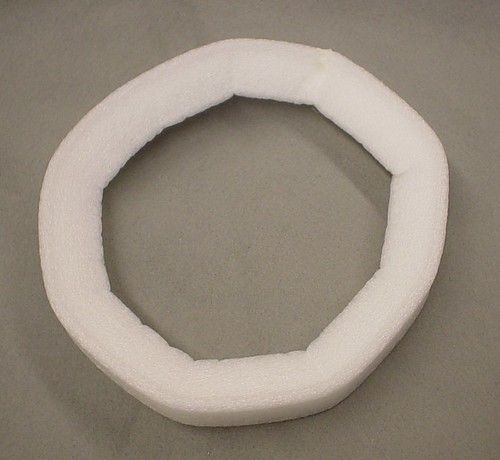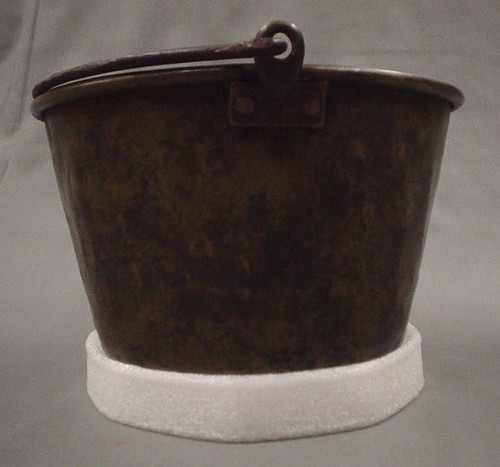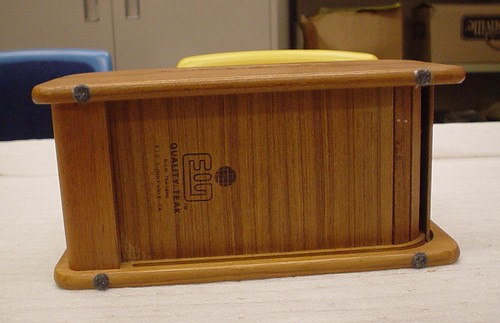
This week I worked on housing two buckets with rounded bottoms. The rounded bottoms mean that they can wobble as they sit on the shelf, potentially impacting other objects, but also putting pressure on a limited number of areas on the bottom. Meaning that some parts of the bottom could become more worn than others. So what to do about it?
You will need:
-A foam knife
-A safe cutting surface
-A hot glue gun and glue sticks
-Foam tri rod
Step one: Using an appropriate length of tri-rod foam, cut several triangle insets a couple of inches apart. Form into a ring to see if more cut insets are necessary.

Step two: Using the hot glue gun, form the rod into a ring and glue the ends together. Hold the ends together for half a minute or so; the rod wants to return to a straight form, so holding it is important.

Step three: If there is glue extruding at the join, trim it off or cover it with a piece of tyvek. Set object on ring.

Now the pressure is evenly distributed along the bottom edge of the bucket, and it is less likely to wobble and impact other objects. I borrowed this method from the National Museum of the American Indian.



